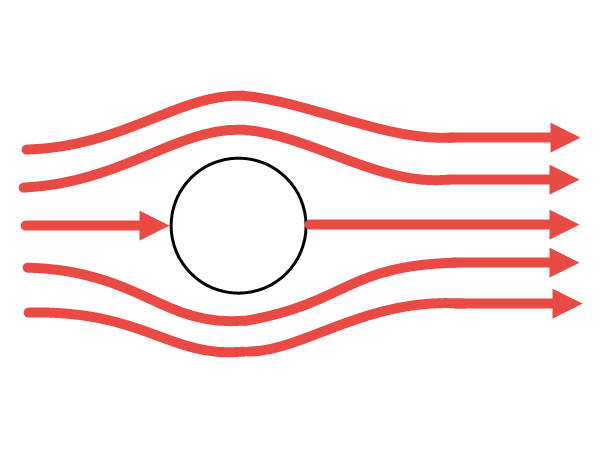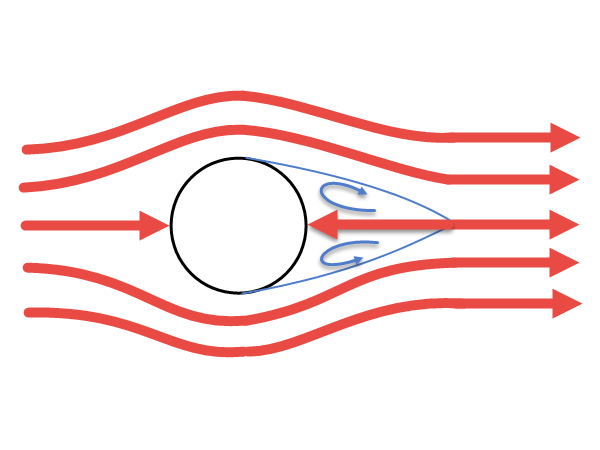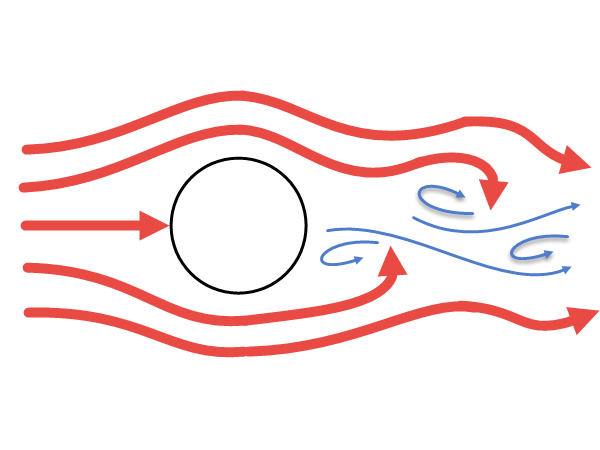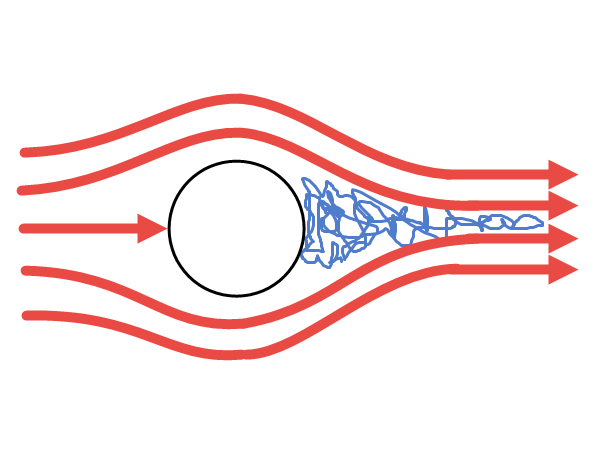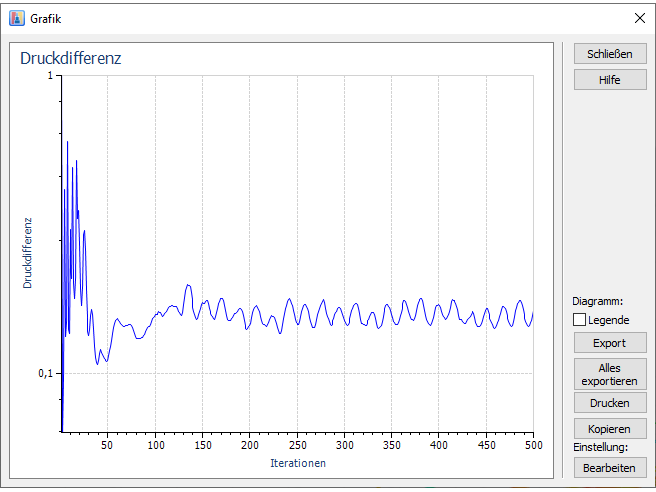In fluid mechanics, a distinction is made between laminar and turbulent flows of liquids and gases.
Laminar flow is characterized by the absence of turbulence perpendicular to the flow velocity in a transition area between two different flow velocities. In this case, the medium flows around the model in layers and does not mix.
In contrast, turbulent flow in the flow field seems to be randomly varied with clear mixing of the medium.
The Reynolds number, which expresses the ratio of force of inertia to viscous forces, is used to describe the flow behavior of geometrically similar bodies.
|
ρ |
Dichte |
|
c |
Strömungsgeschwindigkeit |
|
d |
Charakteristische Länge |
|
η |
Dynamische Viskosität |
|
ν |
Kinematische Viskosität |
If the model geometry and the medium property remain the same, the flow changes with increasing flow velocity from laminar to turbulent flow. In this case, the laminar flow is characterized by a low Reynolds number and the turbulent flow by a high Reynolds number.
The transition from laminar to turbulent flow goes through the following basic stages for simple bodies:
- At low Reynolds numbers, the medium flows around the body in a laminar way. This behavior occurs at very low velocity or high viscosity. The medium divides in front of the body and flows together again behind it. In this case, we are speaking of stationary flow.
- At slightly elevated Reynolds numbers, you can see that a symmetrical vortex pair is formed directly at the back of the body around which there is a flow. This type of flow is still considered as stationary.
- With a further increase of the Reynolds number, a Kármán vortex street is formed behind the body around which there is a flow. In this flow diagram, the right and left vortices detach out of phase from the back of the body. As of this moment, the stationary flow becomes a temporally periodic flow form.
- At high Reynolds numbers, the turbulence breaks down into smaller elements and forms a turbulent boundary layer. In this area, the medium is highly turbulent and hard to predict. The medium is no longer stationary at this stage.
If the stationary solving process of RWIND Simulation converges with the pressure difference below the specified minimum value, you can usually assume a stationary flow (see Points 1 and 2). If the solution process oscillates about a higher differential value, the program does not find a stable state of the flow.
The oscillation is an indication of periodic vortex shedding (see Point 3). As of this point, the result is influenced by the flow varying in time, and a time-dependent transient calculation is required. The RWIND 2 program with the "Pro" extension stage provides a corresponding transient solving process for this task.



